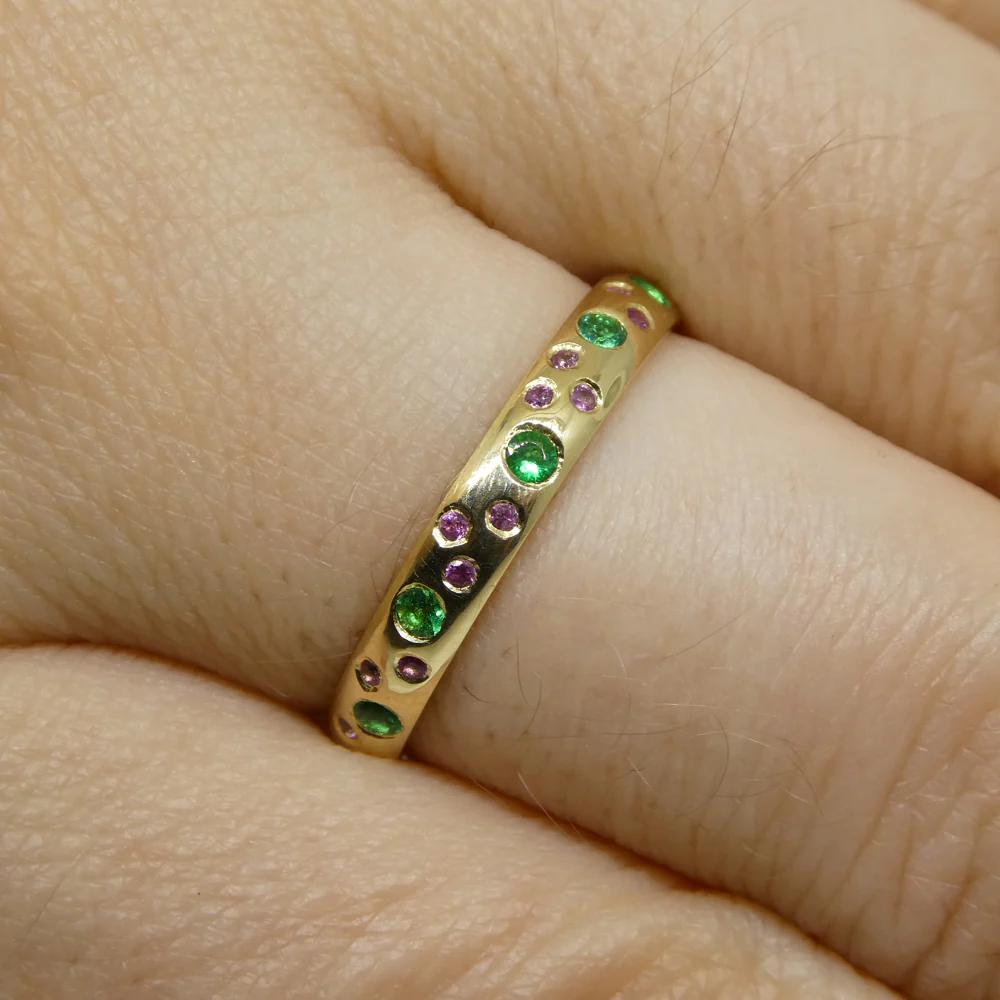
Flush Mounting Setting Explained
Share
Flush mounting is a type of gemstone setting in which the gemstone is set directly into the metal of the ring, level or "flush" with the surface. Here is a simple step-by-step process that explains how it works:

Step 1, Design: The first step involves deciding on the design of the ring and the gemstone to be set in it. The size and shape of the gemstone will influence the design of the ring. The metal chosen for the ring also plays a key role in this process.
Step 2, Drilling: Once the design is decided, a hole is drilled into the ring where the gemstone will be placed. The size of this hole should be slightly smaller than the size of the gemstone so that it can be properly secured.
Step 3, Creating a Seat: A gem setter uses a burr (a specialized tool) to create a seat for the gemstone within the drilled hole. The seat is shaped to match the girdle (widest part) of the gemstone.
Step 4, Placing the Gem: The gemstone is placed in the hole, making sure it sits properly in the seat. The fit should be snug, with the gemstone sitting level with the surface of the ring.
Step 5, Securing the Gem: Using a tool called a burnisher, the jeweler will push the surrounding metal over the edge of the gemstone. This secures the gemstone in place. This needs to be done carefully to avoid damaging the gemstone or the ring.
Step 6, Polishing: The final step involves polishing the ring to ensure the gemstone and the metal surrounding it are smoothly finished. This can also help to hide any small scratches or imperfections caused during the setting process.
It's important to remember that this is a simplified explanation and in practice, the process of flush mounting a gemstone into a ring requires skill and expertise. It is usually done by professional jewelers using specialized tools.
Flush mount setting provides a modern look and is also practical because it offers great security for the gemstone and a smooth surface, which is less likely to snag on clothing or other materials.







